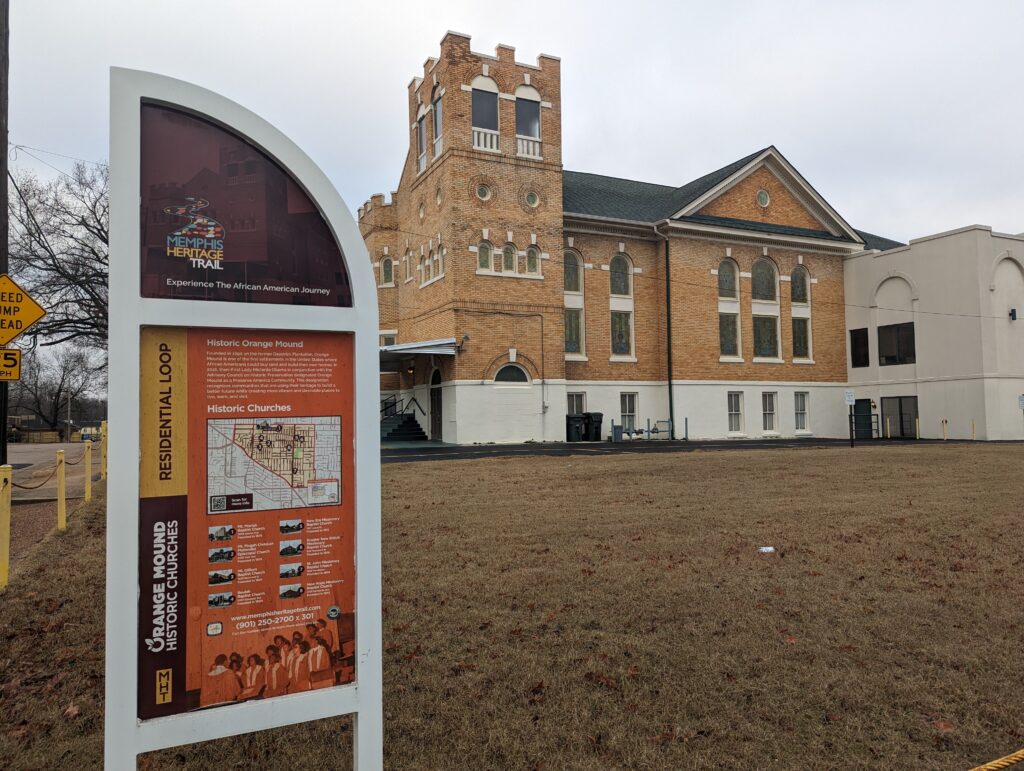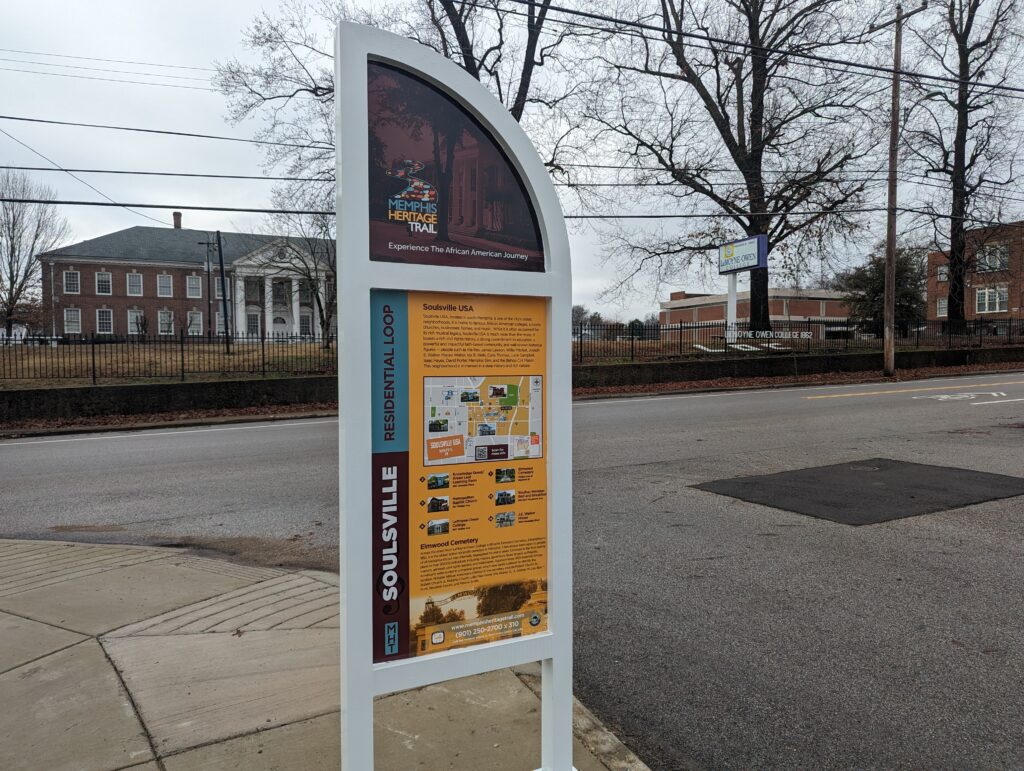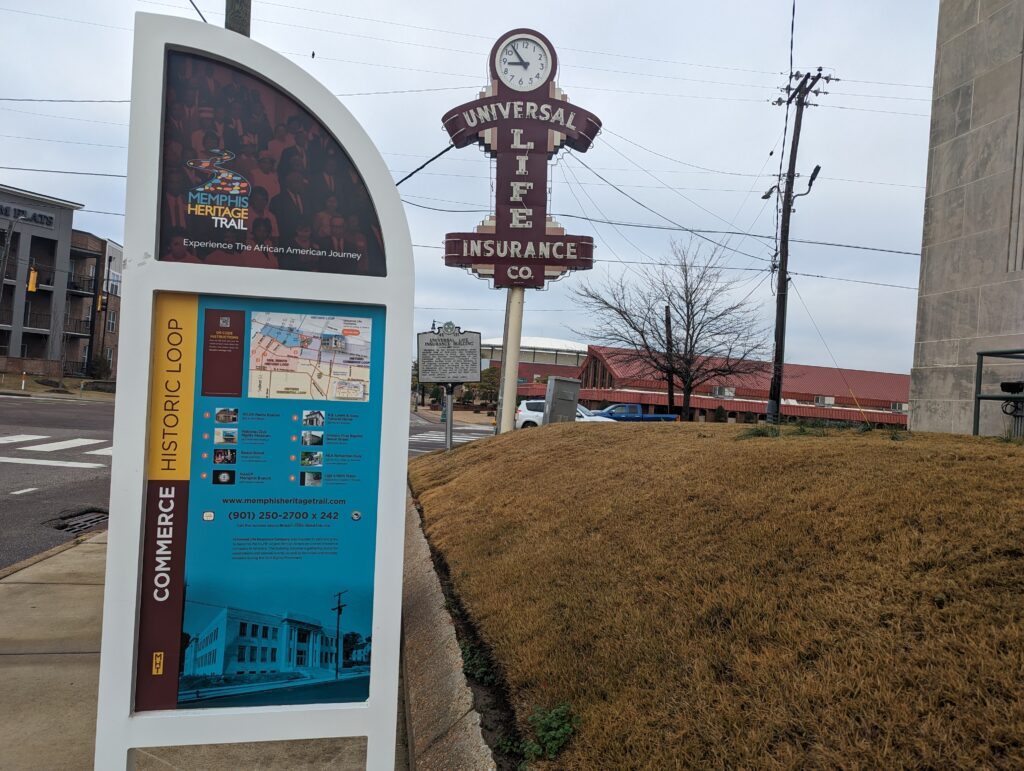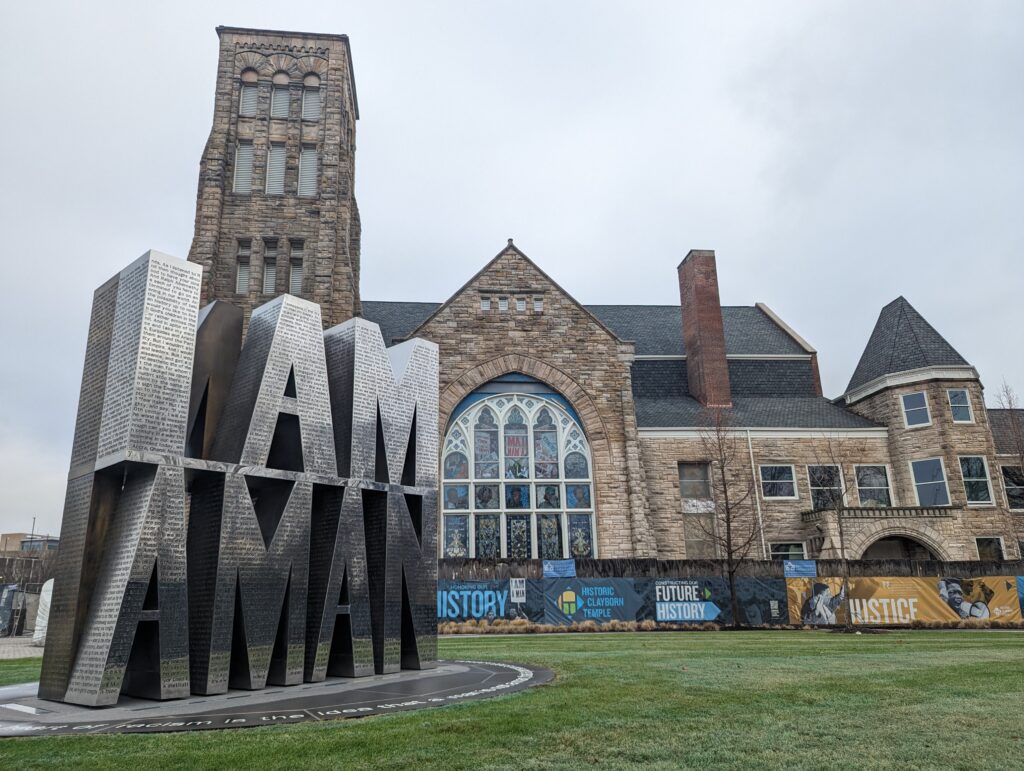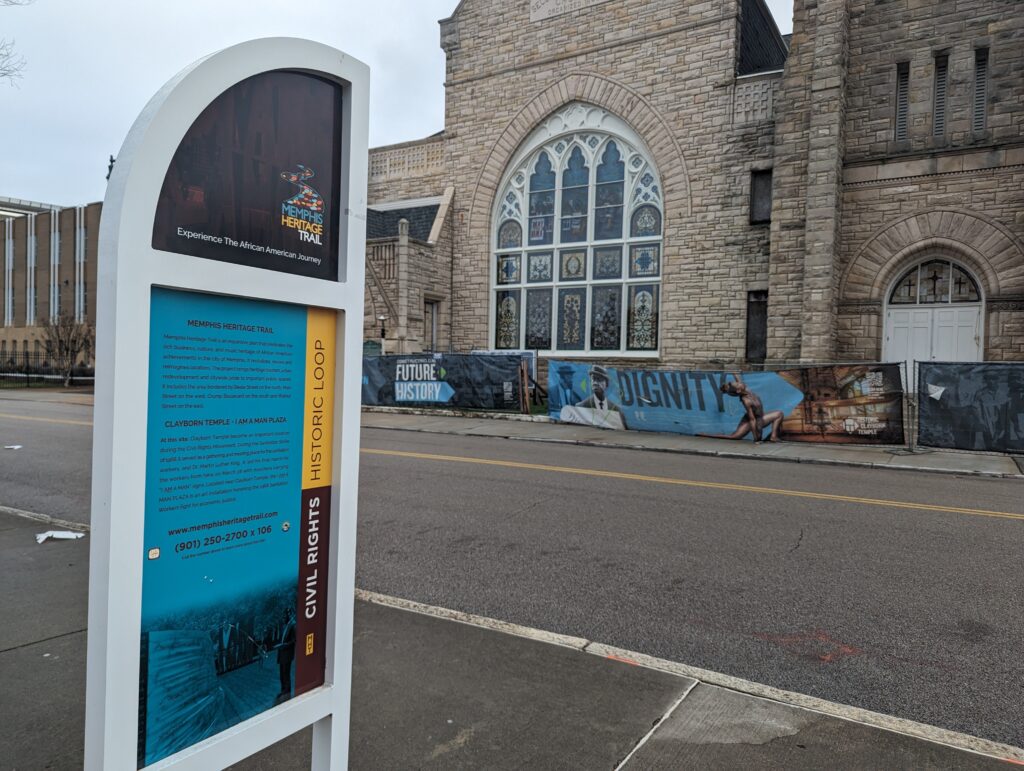Exploring the Memphis Heritage Trail with the Shared Futures Lab
On the surface, it seems unlikely that the Memphis Heritage Trail (MHT) – a multisite, multimodal, multimedia walking museum that celebrates African American heritage and culture in the South City, Soulsville, and Orange Mound neighborhoods – would be conceived and managed by the City of Memphis’s Division of Housing and Community Development
This Division is more commonly associated with affordable housing and policy initiatives; however, for Felicia Harris, the Division’s Deputy Director of Policy and Programs, showcasing these communities’ cultural and historical assets has always been central to the process of transforming and redeveloping these neighborhoods.
Reframing the Past
According to Harris, “In 2008, when the project was first conceptualized and envisioned, if one were to drop from Mars into Memphis, it was not evident that Black people ever lived and did anything significant here in the city because the city was not really showcasing…the contributions of African Americans.” At that time, the City was redeveloping a cluster of housing projects in South City, and division staff wanted to preserve the history and heritage of the neighborhood as they imagined the future.
During the planning phase (2008-2016), stakeholders attended over 100 community meetings to determine what stories to share and how to tell them. Ultimately, they divided the material into four tour loops – Civil Rights, Entertainment, Commerce, and Residential – in the 20-block redevelopment area. Biographies, building histories, and historical data are shared through historic markers, walking tour brochures, and a mobile app that includes archival materials, oral history interviews, and videos.
The project grew to include links to African American sites in neighborhoods that are beyond the trail’s original footprint, eventually resulting in Residential Loops in Orange Mound and Soulsville. Harris foresees the MHT expanding west towards the Mississippi River to encompass the history of slavery and cotton distribution as well as north towards City Hall to discuss legislation.
The goal is to continue reframing the city’s history to tell a more complete story that centers the experiences, innovations, and achievements of Black Memphians.
Place-Based Cultural Tourism in the Present
This centering of previously untold narratives is not just about remembering the past. It’s also about creating a positive economic impact in the present. To this end, one of the project’s goals is to be a destination for place-based cultural tourism. This tourism model emphasizes authentic immersive experiences that are focused on discovery, connection, and education.
Harris sees cultural tourism as a way to maintain the aesthetic character and history of neighborhoods while encouraging additional spending. She uses the redevelopment of Orange Mound’s Melrose High School into a community library, genealogy center, and senior housing as an example of a MHT project that will spur “other housing [and] commercial development in the catchment area, thus increasing in uplifting the entire neighborhood.” The genealogy center will serve as a tourist destination for visitors doing their own family research.
An Augmented Future?
Augmented reality (AR) is already being used in some cities to provide heritage tours that overlay digital information on the physical environment. On Santa Monica’s Broadway corridor, pedestrians can use the Broadway History Lens app to see and hear what the neighborhood was like before the interstate. This example is what futurist Jane McGonigal calls a “clue to the future” – evidence of change that is already happening today.
It’s a small mental jump to imagine a near future when a person does not need to be holding a phone to interact with digital information. Perhaps, AR equipped glasses with built-in behind-the-ear speakers will become the new norm and provide Memphians and tourists the opportunity to turn on a MHT Lens that features residents telling stories about their neighborhood. This type of tour could promote empathetic connections as individuals find commonalities between their lived experiences.
For her part, Harris is excited about the possibilities of using AR to make the Memphis Heritage Trail appealing to young audiences – either as viewers learning about the past or as coders creating the AR future.
Humanities Tennessee partially funded Phase II of the Memphis Heritage Trail during the FY2022 grant cycle.
This post is part of the Shared Futures Lab – a space for Humanities Tennessee to explore how the outcomes of past and current humanities may impact the future of Tennessee communities and civic life.




